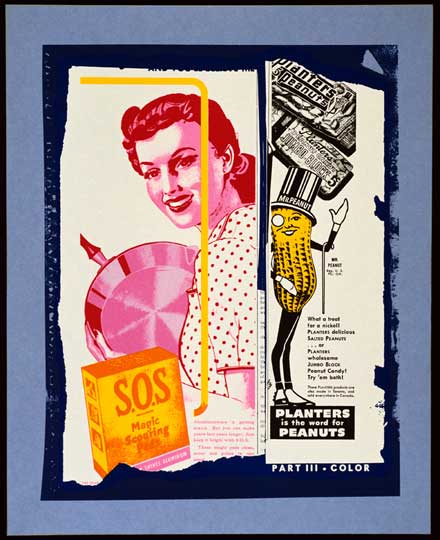Alix Collingwood introduces ‘Art and Optimism in 1950s Britain’, which opens today at mima, Middlesbrough.
Click here for a gallery of images from the show
Can you tell us a bit about the exhibition?
‘Art and Optimism’ explores the changes in the country’s mood and artistic output in the post-war period. The exhibition takes visitors on a journey through the Festival of Britain via the chill of Cold War paranoia to the optimism of 1950s design and the Pop art movement; it also examines how the era affected the people of Middlesbrough and North East England.
What makes this a distinctive show?
This exhibition includes acclaimed art and design of international importance, featuring works from the Tate collection, the National Galleries of Scotland, the Arts Council Collection, the Museum of London, Tyne and Wear Archives & Museums, Preston Park Museum & Grounds, Richard Hamilton Estate, the Museums, Galleries and Archives of Wolverhampton, National Arts Education Archive, Durham County Council Collection, North East Film Archive and the Geffrye Museum alongside works from mima’s own collection.
How did you come to curate this exhibition?
Our thinking began back in 2011 when we were gifted an archive relating to the Friends of Middlesbrough Art Gallery, who established themselves in the 1950s, campaigned for the opening of the Middlesbrough Art Gallery in 1957 and as such formed the artistic heritage of Middlesbrough and mima, creating a lasting legacy.
Middlesbrough itself was experiencing huge change throughout the 1950s. A new plan for redevelopment was being drawn up for the region, embracing new modernist architecture and American-style planning. In 1944 The Middlesbrough Corporation commissioned architect Max Lock to carry out a detailed survey of the town. The town still struggled with its pre-war housing and high unemployment. Lock saw the social element of the survey as important: the cooperation and involvement of the community were vital to the plan’s success and Lock placed the people of Middlesbrough at its heart.
Click here for more curators’ First Looks…
What is likely to be the highlight of the exhibition?
Rather than one specific highlight I feel the presentation of significant works by significant artists, many of which are being seen the first time in Middlesbrough will be a big draw for many visitors. The exhibition also considers a local focus, looking at Middlesbrough and the wider North East throughout the period – in particular Richard Hamilton and Victor Pasmore’s time at Newcastle and Pasmore’s work in Peterlee.
And what’s been the most exciting personal discovery for you?
Its hard to pinpoint one discovery as the most exciting as this exhibition is the culmination of three years of thinking, researching and planning. But in particular delving into the archive of the Friends of Middlesbrough Art Gallery, gifted to mima by the current Lord Crathorne, mapping the artistic heritage of the town and understanding what mima has grown out of.
What’s the greatest challenge you’ve faced in preparing this exhibition?
I wouldn’t say we’ve faced any great challenges, just opportunities!
How are you using the gallery space? What challenges will the hang/installation pose?
We have used our gallery spaces to take visitors on a journey through the period. OMMX Architects, London, have designed structures within the galleries inspired by the work of Victor Pasmore. The unfinished wood structures reference the artist’s abstract constructions as well as his approach to a ‘total environment’ and his study of interaction and use of spaces. The constructions here are intended to break up the space and our circulation around them as well as create new sight lines throughout the galleries, with the unfinished material referencing the ‘make do and mend’ attitude of the 1950s.
Click here for a gallery of images from the show
‘Art and Optimism in 1950s Britain’ is at mima, Middlesbrough, until 29 June 2014.




